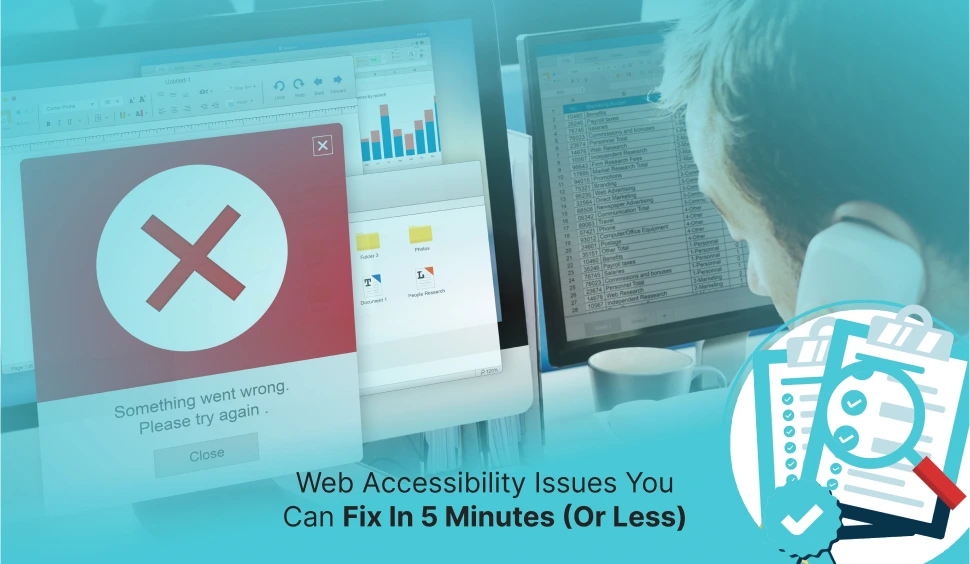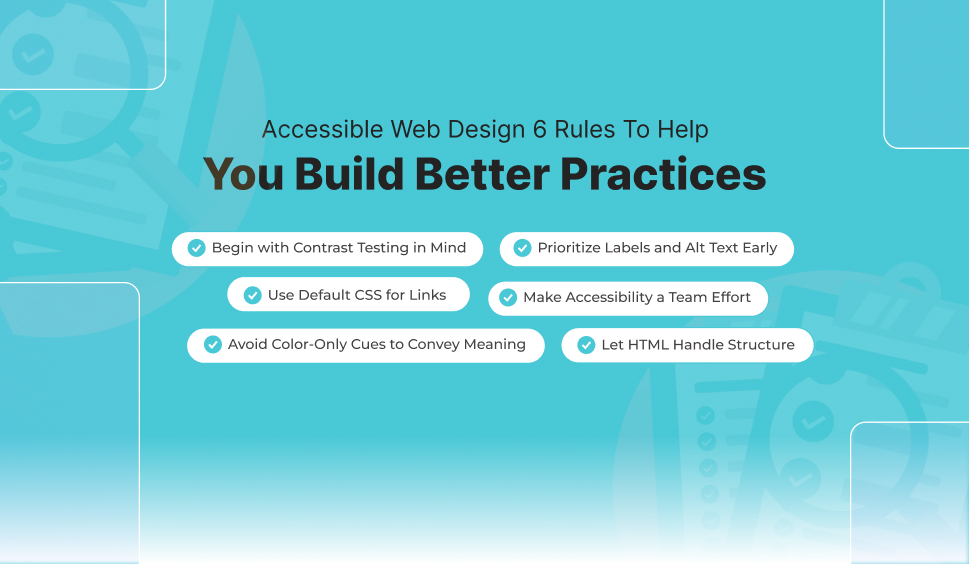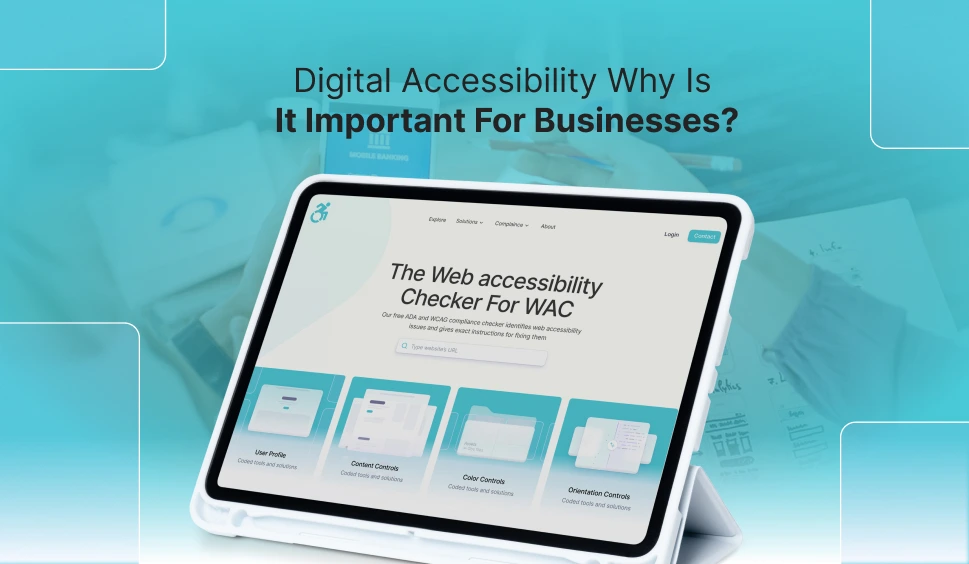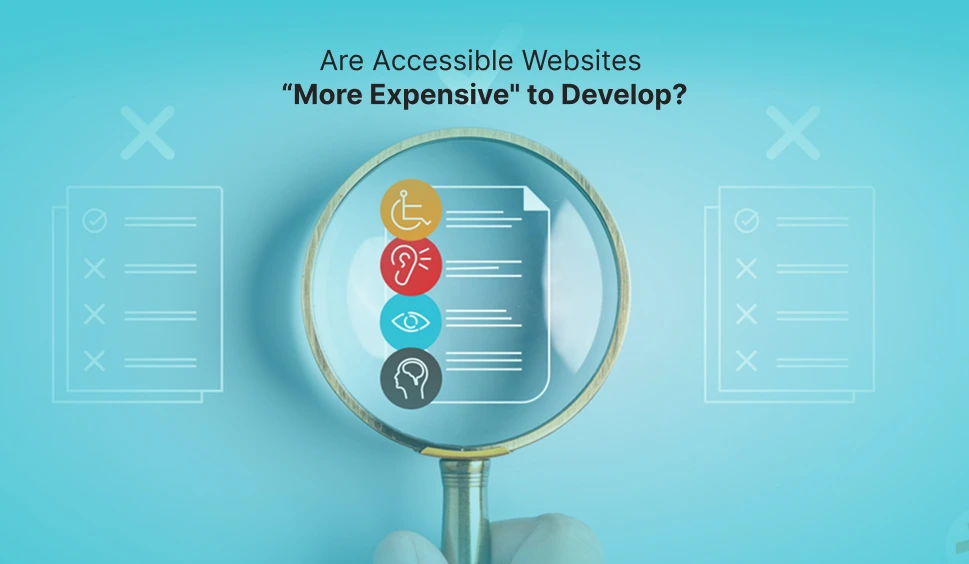
Web Accessibility Issues You Can Fix In 5 Minutes Or LESS
Ideally, every website meets the AA level criterial of the web content accessibility Guidelines (WCAG), the international standards for digital accessibility. Basically, that’s not the case. According to the latest WebAIM analysis, basic accessibility problems are present on 94.8% of the top million home pages on the internet.
Business leaders usually state that web accessibility is not a priority; providing an inclusive design needs resources: You will need well-informed developers and web designers functioning around the clock to fix basic accessibility issues. Right?
Not always. If you have five minutes, you can test your website for some of the most common difficulties, correct them, and improve the user experience. Most accessibility issues are pretty simple to fix. Check out these five issues immediately.
Missing HTML Language Attributes
To get things to begin, here’s an accessibility problem that you can resolve in a second or less, excluding the time it takes to enter into WordPress or any other content management system you may be using.
WCAG requires that “each passage or phrase in the content can have its human language determined programmatically,” with a few exceptions. Usually, that means including an HTML language tag on each page of your website.
If your whole website is in U.S. English, you basically need this attribute on every page:
<html lang=”en-us”>
If parts of your page are in another language, for instance, you have got a term of Service page with similar terms in some different languages; things get more challenging but not that much. You will simply use the lang attribute to proclaim the language of each section.
How It Helps Accessibility
Screen readers, a software that changes text to audio, initially used by people with vision disabilities, use language tags to set their pronunciation rules. Web browsers also use language tags to display characters and scripts properly.
Your material will function consistently for all users if you use precise language tags.
Missing Alt Text
There is a reason why almost every digital accessibility article mentions alternative text (alt text): missing or low-quality alt text is frustrating for AT users, and it’s extremely easy to fix!
Alt text should concisely and clearly describe what a visual element like an image or graph shows, especially for users who can’t see it. A supportive way to think about it: If you were explaining your website to a friend over the phone, what would you say to help them comprehend the image’s purpose and content?
There’s a bit more to writing good alt text, but at its center, that’s the key idea.
How Does It Helps Accessibility?
Screen readers will help users read alt text, and the alt text would also be shown if the image could not be loaded due to some reasons like browsing caused by a slow internet connection or due to an intentionally turned off images in the web browser’s setting.
The habit of writing an effective alt text enhances experiences for the users along with providing the advantage of better search engine optimization (SEO) and image organization.
Write Descriptive Page Titles And Subheadings
Based on your website’s size, this can take more than 5 minutes, but it should not take more than one or two minutes per page, qualifying as a quick fix. All pages on your website must have expressive, exceptional titles. Most pages must also have subheadings, which break up the content and make it effortless to understand.
Some quick tips:
- Page titles ought to concisely outline the page’s subject. For instance, the title tag on this page is the blog’s title.
- The text should be broken up into more manageable “chunks” by using subheadings. Each quick accessibility fix is grouped under a subsection on this page.
The order of subheadings should be nested. Thus, <h3> tags must come after <h2> tags, <h4> tags must come after <h3> tags, and so on.
How Does It Helps Accessibility?
Page titles and subheadings help people “scan” your content to find the details that they need. Both titles and headings must be programmatically definable, meaning that they are not recognizable by software, as the text that is visually formatted to appear like a subheading does not count.
Poor Color Contrast
This issue could take more than a few minutes to fix in a few cases, but if you focus on accessibility from the first stages of web design, it does not take any extra time at all.
We are given specific goals by WCAG, including Success Criterion 1.4.3 Contrast (Minimum): a contrast ratio of at least 4.5:1 between standard text and its background, and 3:1 for large text (which is 18 points or more, or 14 points or more if bold). Logos and purely decorative writing are OK, but contrast is necessary for anything that should be readable.
How Does It Helps Accessibility?
Low-contrast text is one of the most common accessibility concerns, which makes browsing more challenging for people with low vision, color vision deficiencies, normally known as color blindness, and other vision disabilities.
Like several accessibility enhancements, fixing contrast concerns can assist all users. How comfortable would you feel viewing light-grey text on a white background on a phone screen in direct sunlight? It’s just a good web design practice to pay specific attention to color contrast.
Don’t Wait More To Begin Enhancing Web Accessibility
Setting achievable goals is crucial when beginning a web accessibility checker initiative. Not every WCAG criterion should be met on day one. Any improvement you will make positively influences the experiences of users with disabilities.
Quick wings can considerably boost usability and send the message that you care regarding inclusive design. You simply need to begin somewhere, and the simplest, fastest tend to be the most crucial.
Why Choose WAC?
Choosing Web Accessibility Compliance (WAC) means focusing on inclusivity and usability for all users, irrespective of their abilities. Following recognized accessibility standards such as WCAG and WAC helps you create websites that are not only compliant with legal needs but also deliver an optimized experience for a wider audience. A more inclusive web is offered by WAC’s approach, whether it is through facilitating easier navigation for people with visual impairments or ensuring seamless interaction for users with motor disabilities. Making an early investment in accessibility can benefit both your company and your users by improving user engagement, optimizing your site’s SEO, and demonstrating your brand’s dedication to diversity and inclusion.
 Let's Discuss Your Tech Solutions
Let's Discuss Your Tech Solutions 




